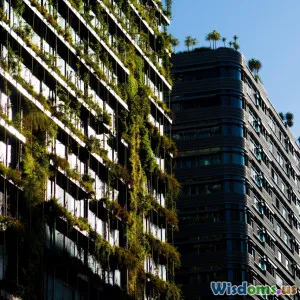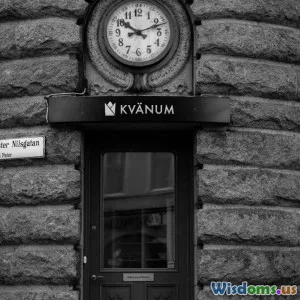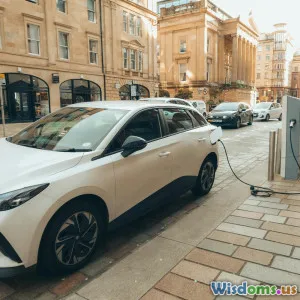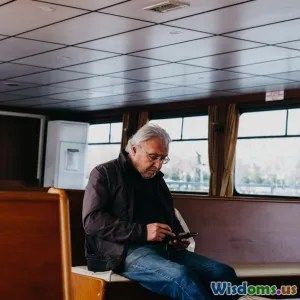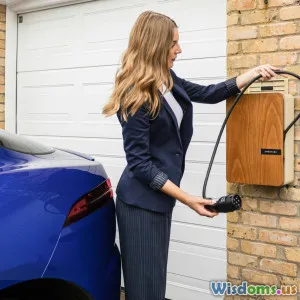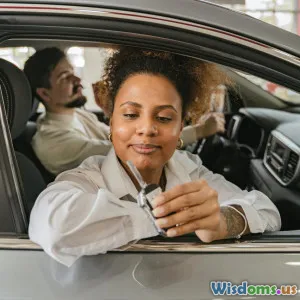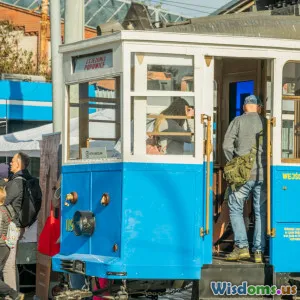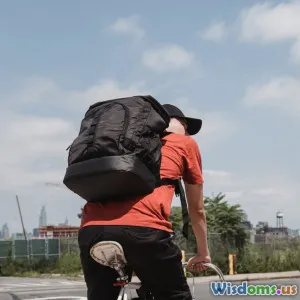
Rethinking Urban Transport Systems
7 min read Explore transformative strategies reshaping urban transport for sustainable, efficient cities. (0 Reviews)
Rethinking Urban Transport Systems: Building the Cities of Tomorrow
In the heart of every thriving city lies a vital network of transportation systems — arteries facilitating the ebb and flow of human activity. However, as urban populations burgeon and environmental concerns intensify, traditional transport paradigms show their limits. Traffic congestion, air pollution, and inadequate infrastructure disrupt millions of lives daily. How can we rethink urban transport systems to create sustainable, efficient, and livable cities for future generations?
The Urban Transport Challenge: Beyond Congestion and Pollution
Cities worldwide are confronting a pressing dilemma: traditional car-centric models gravitate toward inefficiency and environmental strain. According to the International Transport Forum, urban transport contributes over 70% of greenhouse gas emissions from transport. Rising private vehicle ownership often exacerbates congestion; for example, in Los Angeles, drivers spend an average of 100 hours annually in traffic jams, ranking amongst the highest globally.
Yet, cities like Copenhagen and Singapore demonstrate that change is possible through integrated strategies and bold policymaking. The question shifts from "How can we add more cars?" to "How can we move people better, smarter, and cleaner?"
Embracing Multi-modal Transport: The Foundation of Future Mobility
Rethinking urban transport demands embracing a mix of movement options that balance speed, accessibility, and environmental impact.
Integration of Public Transit and Micro-mobility
Seamless integration between buses, subways, bike-sharing, and e-scooters creates an ecosystem where citizens have freedom of choice. Take Amsterdam, where nearly 60% of trips are by bike, supported by high-quality lanes and connections to public transit. The city’s coordinated ticketing systems and real-time apps allow easy transfers, reducing reliance on cars.
Walkability and Urban Design
Prioritizing pedestrian-centric design enhances health and community interaction. The success of pedestrian zones in cities such as Barcelona, with its "superblocks" project closing streets to through traffic, illustrates how walking-friendly environments improve air quality and local commerce.
Technology as an Enabler: Smarter, Cleaner Transport
Advancements in technology are catalysts for transforming urban transport.
Electrification and Clean Energy Vehicles
Electric vehicles (EVs) are at the forefront of reducing transport sector emissions. Cities like Oslo lead globally with over 60% of new car sales being electric. Urban policies incentivizing EV usage and investing in charging infrastructure directly incentivize the shift away from fossil fuels.
Mobility as a Service (MaaS)
Platforms that combine route planning, booking, and payment seamlessly enhance user experience and efficiency. Helsinki’s Whim app exemplifies MaaS success by combining multiple transport modes into one subscription, reducing the need for car ownership.
Autonomous Vehicles and AI
Self-driving technology promises to optimize traffic flow and reduce accidents. Trials in Phoenix and Singapore have shown potential benefits, but cities must thoughtfully integrate AVs to avoid reinforcing sprawl or congestion.
Policy Innovations: Steering Change through Governance
Effective policy frameworks underpin successful transport transformations.
Congestion Pricing and Low Emission Zones
London’s congestion charge reduced traffic by 15% in the congestion zone, while cities like Madrid and Milan deploy low emission zones that restrict the most polluting vehicles.
Investment in Infrastructure and Equity
Reallocating road space for buses, cycling lanes, and sidewalks addresses long-standing disparities in mobility access. The "Complete Streets" approach in New York City demonstrates how inclusive design can prioritize safety and attract more users to sustainable modes.
Community Engagement and Behavioral Incentives
Public buy-in arises when policies reflect community needs. Participatory planning in places like Portland has been instrumental in tailoring solutions that foster acceptance while altering travel behavior.
Real-World Success Stories
- Curitiba, Brazil: Pioneered Bus Rapid Transit (BRT) systems since the 1970s, offering efficient, affordable transit to millions and reducing private car dependency.
- Singapore: Leveraged a port city’s precision planning with Electronic Road Pricing to dynamically prevent congestion and maintain punctuality.
- Paris: Under Mayor Anne Hidalgo, the "Paris Respire" initiative closed many streets to cars on weekends, complemented by aggressive cycling promotion, setting long-term visions for a greener city.
Challenges and the Road Ahead
Despite optimism, repositioning urban transport is fraught with hurdles: entrenched car cultures, funding constraints, and technological uncertainties. Yet, these challenges underscore the necessity for integrated, flexible approaches that adapt local contexts.
Urban transport's future lies not in isolated solutions but interconnected systems marrying technology, policy, and community values.
Conclusion: Reimagining Mobility to Enrich Urban Life
Our cities are organisms that grow and evolve, shaped decisively by how people move within them. By transitioning from car-dominated infrastructures to diverse, sustainable urban transport ecosystems, cities can unlock tremendous benefits: cleaner air, more vibrant communities, and enhanced quality of life.
As Benjamin Franklin once remarked, "An investment in knowledge pays the best interest." Understanding urban transport's complexities and possibilities empowers citizens and policymakers alike to enact meaningful change. It’s time to rethink, redesign, and rejuvenate the ways we journey through our urban landscapes—for ourselves and future generations.
Rate the Post
User Reviews
Popular Posts










